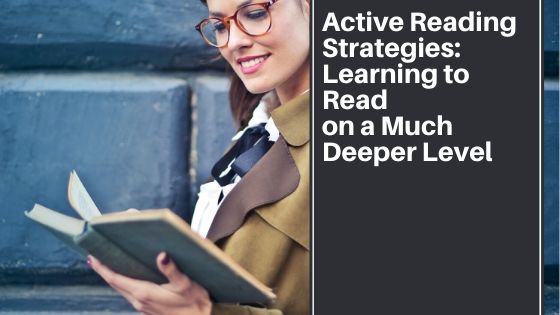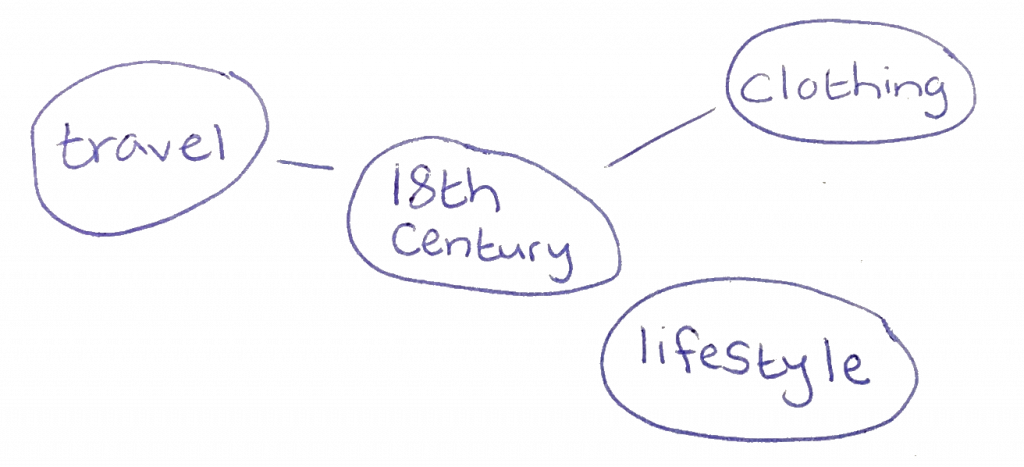
To read with determination and purpose is to be an active reader. This reading strategy involves becoming engrossed in the reading material, whether you’re reading a blog post or a full-length book. In fact, this process provides the opportunity to retain more information after you have read the material. This is excellent news for people like me who struggle to remember what they have read at all. Let’s dive into some active reading strategies, examining how each strategy can be beneficial to you as a reader.
Above all else, it’s vital to be aware of the author’s purpose. Why are they writing the document? Is the style of writing casual or formal? Do they use formal language targeted toward a specific group (e.g., using medical terminology those in the health industry may understand), or do they do use more general terms? These two factors will tell you a lot about the author’s intended audience. Moreover, ask yourself why the document was written. Was it written to inform, entertain or instruct you?
Before you read any text at all, skim the document. Note any specific information within it – names, dates, statistics, terminology, graphics and/or illustrations, etc. This will allow you to get an overall idea of the document without reading all of it. This is common within textbooks, where chapters often have summaries and chapter reviews. Moreover, while reading through the initial preview, it allows you to familiarize yourself with all the main ideas of the document. This helps you move through the document much faster while having a more effective reading style.
Next, consider what you already know about the topic. Where have you read about this subject previously? How deeply have you studied and/or taken notes on it? If this topic is new, it may be difficult to find any connection to it. But if you have prior knowledge to the subject, it allows you to read more actively and make connections to it. You can read about the subject on a much deeper level, engaging with the material in a way which gives you a profounder understanding. Likewise, it may also drive your passion to keep reading about the subject.
Becoming an active reader is much deeper than thinking critically about the text. It further involves looking at individual ideas on a singular or complex level. Instead of looking at an essay’s three main ideas, break each idea into separate chunks. Known as chunking, this strategy allows you to easily commit information to your short-term memory. Paraphrasing, too, is an excellent strategy to increase your active reading skills. Here you take text and rewrite it in your own words. This allows the reader to become more involved in the text, studying it for comprehension and understanding.
Another way to increase your active reading is to visualize the text. Many students and readers do this through mind maps, where a word is placed in the center of the page in a bubble. Additional words (usually main ideas) stem off from this one idea. For instance, if you place “eighteenth century” in the first bubble, three bubbles which could stem off include clothing, lifestyle and travel. Numerous ideas could then branch out from each of these categories. But keep in mind that this only one type of visual representation. Other types include maps and graphs, Venn diagrams (where circles are used to compare information), or charts specifically listing data. All of these can be derived from active reading.

Active readers also use additional books and sources to clarify the information which she or he is reading. These may include fact books, dictionaries, encyclopedias, thesauruses, a textbook, an audio or video source, etc. All these sources are used to clarify terminology and information which is discussed within the document, answering any questions which the reader may encounter. Keeping track of the terminology, as well as taking the time to look up each word, is vital to increasing your vocabulary. Try to integrate as many of these words into your vocabulary as you can.
To stay engaged as an active reader, always try to annotate the text. This involves highlighting only key information, such as terminology or main ideas. If you highlight the entire page of a book (or your notes), then annotating a text is ineffective. But annotating a text involves much more than highlighting. It entails becomes completely involved with the text. Write notes in the margins. Use post-it notes to mark specific pages of importance, such as beginnings and endings of chapters. And, use symbols that will simplify finding information. All of this will help you move through the text at a quicker rate.
Lastly, even though the document may already has a summary, write one of your own. Here is your chance to insert your opinion about the author. What did you enjoy – and not enjoy – about reading it? Was their document interesting or boring? What were the main ideas, terms and/or concepts? Was their writing well-written or not structured well? Analyze the tone of their document, whether it was suitable or unsuitable for their audience. Write your honest opinion about the document, for this ensures that you completely understand what you have read. Summaries are crucial to reading because it shows that you have comprehended the information.
If you struggle with reading, try this reading method. It’s a method I’m going to put into practice this year. If you’re already reading as an active reader, leave me a comment and let me know how well it works for you. Even if you’re not reading like this, I would still love to hear from you. Have a happy new year!